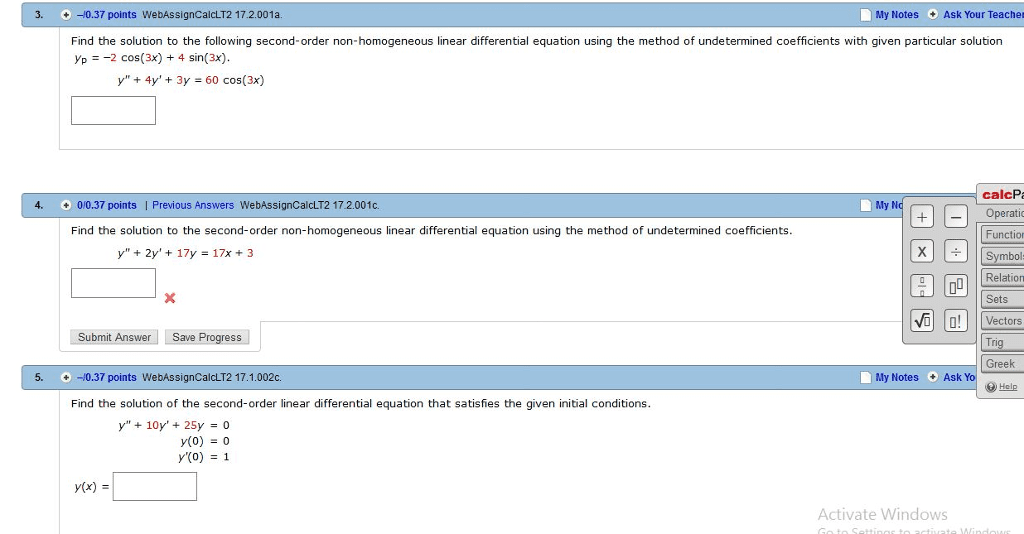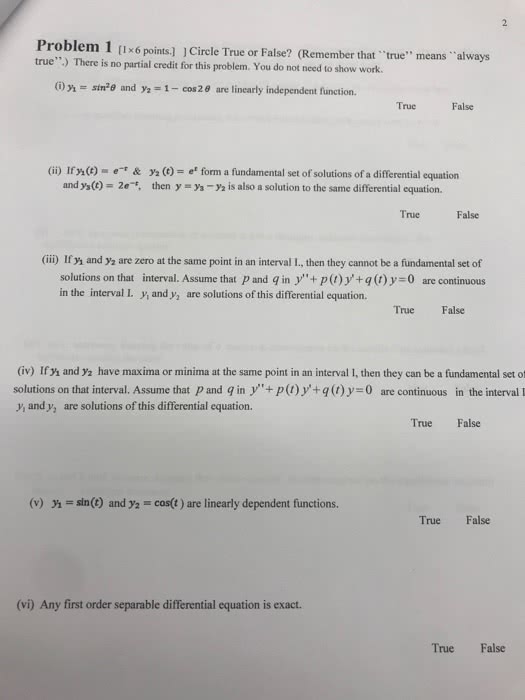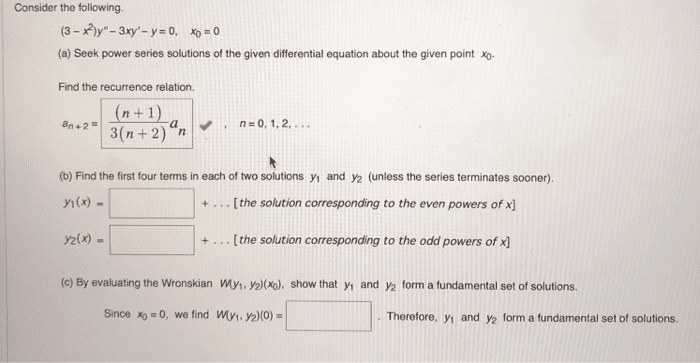MATH 251 Lecture Notes - System Of Linear Equations, Algebraic Equation, Wronskian
Document Summary
The solutions of linear differential equations with constant coefficients of the third order or higher can be found in similar ways as the solutions of second order linear equations. For an n-th order homogeneous linear equation with constant coefficients: The linear independence of those solutions can be determined by their wronskian, i. e. , w(y1, y2, , yn 1, yn)(t) 0. Note 2: the wronskian w(y1, y2, , yn 1, yn)(t) is defined to be the determinant of the following n n matrix y y. This is a polynomial equation of degree n, therefore, it has n real and/or complex roots (not necessarily distinct). Those necessary n linearly independent solutions can then be found using the four rules below. r e r t k 1 t. , y = te t are all solutions. t. If r is a distinct real root, then y = e (ii). If r = i are distinct complex conjugate roots, then y = e (iii).





